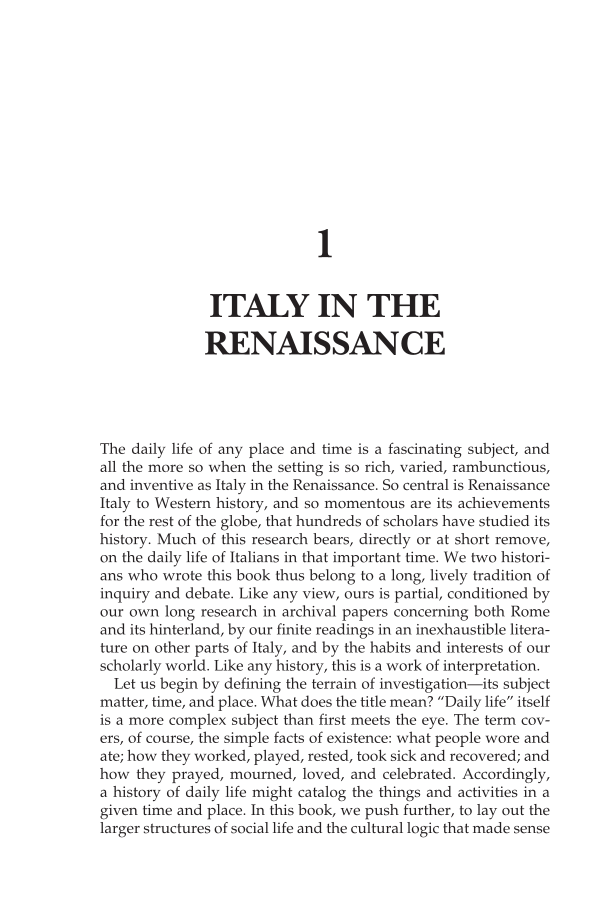The daily life of any place and time is a fascinating subject, and all the more so when the setting is so rich, varied, rambunctious, and inventive as Italy in the Renaissance. So central is Renaissance Italy to Western history, and so momentous are its achievements for the rest of the globe, that hundreds of scholars have studied its history. Much of this research bears, directly or at short remove, on the daily life of Italians in that important time. We two histori- ans who wrote this book thus belong to a long, lively tradition of inquiry and debate. Like any view, ours is partial, conditioned by our own long research in archival papers concerning both Rome and its hinterland, by our finite readings in an inexhaustible litera- ture on other parts of Italy, and by the habits and interests of our scholarly world. Like any history, this is a work of interpretation. Let us begin by defining the terrain of investigation—its subject matter, time, and place. What does the title mean? “Daily life” itself is a more complex subject than first meets the eye. The term cov- ers, of course, the simple facts of existence: what people wore and ate how they worked, played, rested, took sick and recovered and how they prayed, mourned, loved, and celebrated. Accordingly, a history of daily life might catalog the things and activities in a given time and place. In this book, we push further, to lay out the larger structures of social life and the cultural logic that made sense 1 ITALY IN THE RENAISSANCE
Document Details My Account Print multiple pages
Print
You have printed 0 times in the last 24 hours.
Your print count will reset on at .
You may print 0 more time(s) before then.
You may print a maximum of 0 pages at a time.




















































































































































































































































































































































































